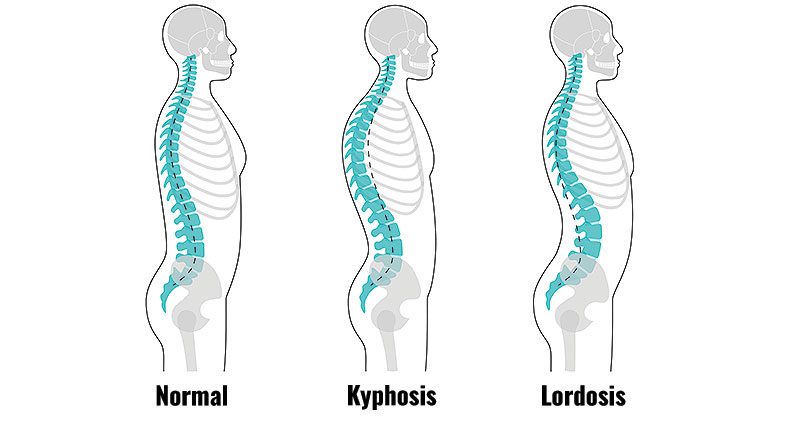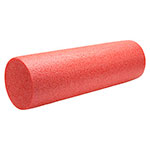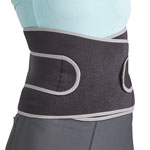Hyperlordosis is an exaggerated lumbar curve in the spine. To put it another way, the lower back curves inwards more than normal. Here we explain the causes, implications for sports injuries, and corrective exercises.
What is Hyperlordosis?
The spine needs a natural curve to function correctly. This is known as Lordosis and is due to the shape of the individual bones in the spine (called vertebrae).
If the curve becomes too great then this is known as hyperlordosis.
Stress is placed on other parts of the spine, causing back pain.
What causes Hyperlordosis?
Some muscles around the hip and spine become tight and some become weak and stretched, causing an imbalance. This is often known as a lower cross syndrome. This is due to the position of the tight and weak muscles. Look at the diagram above.
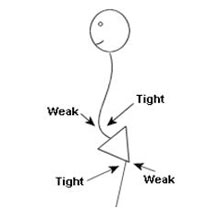
If you drew a line from the tight lower back to the tight hip flexors and then another line from the weak abdominals to the weak hamstrings and glutes, the two lines would form a cross shape.
The muscles that are often tight are:
Trunk extensors are called the erector spinae and quadratus lumborum. These muscles enable you to bend backwards.
Hip flexors, in particular, the iliopsoas muscle. These lift your knee up in front of your body.
These muscles require stretching.
The muscles that are weak and stretched:
- Abdominal muscles called the rectus abdominus, internal oblique, and external oblique muscles.
- Hip extensors or hamstrings and gluteus maximus. These muscles bring your thigh down and back when sprinting.
- Muscles that are too weak need strengthening.
Corrective exercises for Hyperlordosis
The following guidelines are for information purposes only. We recommend seeking professional advice before beginning rehabilitation.
To correct an increased curve in the low back, the hip flexor muscles and lower back need to be stretched. The gluteal muscles and abdominals may need strengthening. If you get it the wrong way around you can make things worse. It is always advisable to get professional advice.
Hip flexor stretch
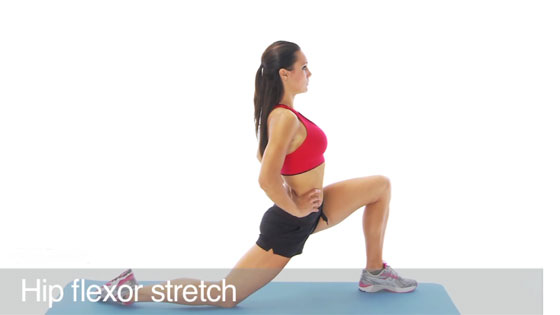
This stretches the iliopsoas muscle, the most powerful hip flexor. It is an important stretch for correcting Hyperlordosis.
- Assume the position as shown with one knee on the floor
- Gently push the hips forwards keeping the back upright until you feel a stretch
- Hold for 20-30 seconds, repeat 3-5 times, several times a day
Lower back stretch
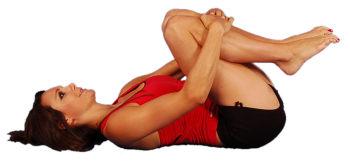
- Lie on your back with your knees bent.
- Pull the knees in towards your back, as far as comfortable.
- Hold for 20-30 seconds and repeat 3-5 times, several times a day.
Abdominal crunch (easy)
- Lie on your back with your knees bent
- Gently slide hands up towards the knees and back down again, raising the head and shoulders off the floor
- Repeat this exercise until you feel the stomach muscles working hard (initially, this may only be 10 reps)
- Rest for a minute and aim to do 2-3 sets
Increase the difficulty of this exercise by placing the hands across the chest or beside the head.
Twisting crunch
- Lie on your back with your knees bent and feet flat on the floor
- Position your hands by your temples as shown
- As you raise the head and shoulders off the floor, twist your upper body so that the right elbow moves towards the left knee
- Return to the starting position and repeat, alternating between left and right twists
- Start by performing 2 sets of 10 reps and gradually increase towards 3 sets of 20
Bridge
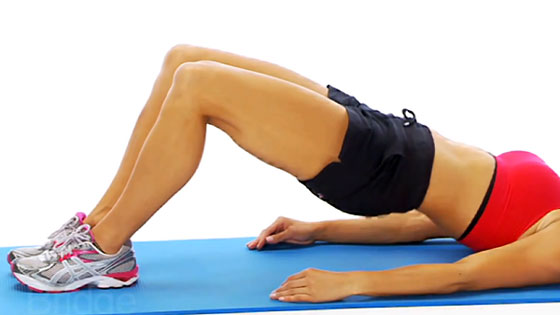
- Lay on your back with your knees bent and feet flat on the floor
- Slowly raise the buttocks and then the lower back off the floor
- Push the buttocks up as high as possible to feel the muscles there working hard
- Hold for 5-10 seconds, rest, and repeat
- Aim for 2 sets of 10 reps initially, building to 3 sets of 20
- This exercise can be performed on a single leg to make it harder
